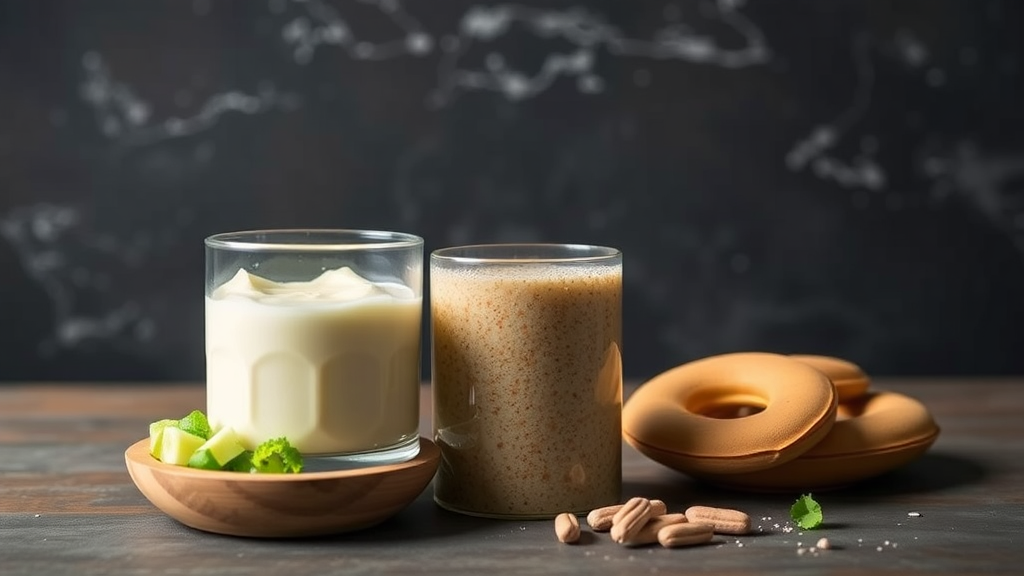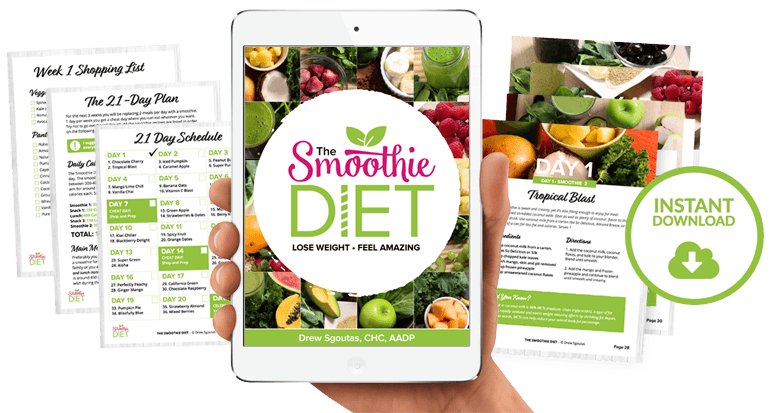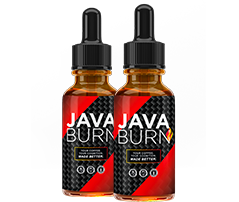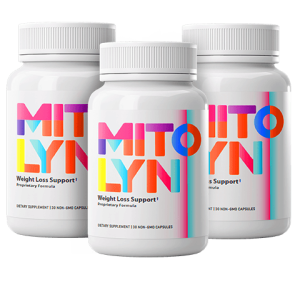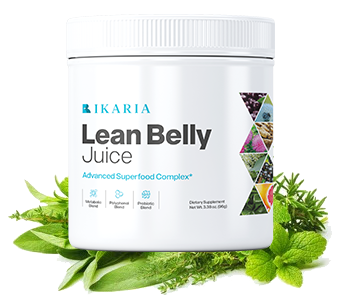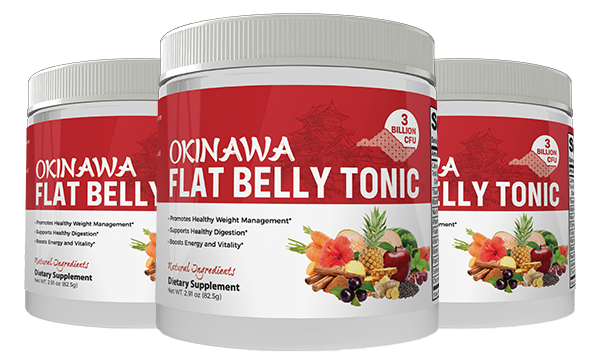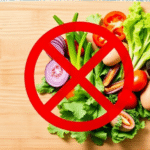How Much Protein Do You Really Need for Weight Loss?
When it comes to weight loss, protein plays a significant role. Understanding how much protein you really need can help you achieve your weight loss goals in a healthy way. The amount of protein you require can depend on various factors, including your age, sex, level of physical activity, and overall health.
Most health experts recommend that protein intake should make up about 10% to 35% of your total daily calories. For those trying to lose weight, increasing protein can support muscle preservation and enhance satiety, which may reduce overall calorie intake.
Here are some general guidelines on protein intake for weight loss:
- Women: Aim for a minimum of 46 grams of protein per day.
- Men: Aim for a minimum of 56 grams of protein per day.
- Active individuals may need about 1.2 to 2.0 grams of protein per kilogram of body weight.
To find your specific protein needs, you can calculate your minimum requirements based on your goals:
| Activity Level | Protein Needs (grams per kg) |
|---|---|
| Sedentary | 0.8 |
| Lightly active | 1.0 – 1.2 |
| Moderately active | 1.2 – 1.5 |
| Active | 1.5 – 2.0 |
To put this into context, let’s say you weigh 70 kg (approximately 154 lbs) and are looking to lose weight while maintaining muscle. If you identify as moderately active, you could aim for around 105 grams of protein daily (1.5 g x 70 kg = 105 g).
Eating protein-rich foods is essential for reaching your daily goals. Here are some excellent sources of protein you can easily include in your diet:
- Grilled chicken breast
- Fish (like salmon or tuna)
- Low-fat dairy products (yogurt, cheese, milk)
- Legumes (beans, lentils, chickpeas)
- Tofu and tempeh
- Nuts and seeds
Protein into each meal can help you feel fuller for longer. This is particularly valuable when you’re trying to lose weight because it can help prevent cravings and the urge to snack.
Many studies support the idea that higher protein diets can aid weight management. A research article published in Nature Reviews found that participants consuming higher protein diets felt more satisfied and had lower total calorie intake overall. Another study in The American Journal of Clinical Nutrition highlights how protein can promote muscle preservation while losing fat.
However, not all proteins are created equal. It’s wise to choose lean sources and avoid processed protein. While it may be tempting to rely on protein shakes or supplements, whole foods provide valuable nutrients that protein powders often lack.
Here are tips for increasing your protein intake without feeling overwhelmed:
- Start your day with a protein-rich breakfast, such as eggs or Greek yogurt.
- Include a source of protein in every meal, whether it be chicken, beans, or nuts.
- Snack on protein-rich foods like cottage cheese or edamame instead of chips or cookies.
- Consider meal prepping to ensure you have access to high-protein meals throughout the week.
When trying to optimize your protein intake for weight loss, it’s essential to assess not just your protein quantity but also the overall balance of your diet. A well-rounded diet includes the right combination of proteins, carbohydrates, and fats. Focusing solely on protein while neglecting other nutrition aspects may not yield the desired weight loss results.
Determining how much protein you need for weight loss boils down to personal factors and your specific goals. By carefully considering your protein consumption and incorporating it into nutritious meals, you can pave the way for a successful weight loss journey.
The Role of Protein in Metabolism and Muscle Preservation
Protein is an essential macronutrient that plays a critical role in various bodily functions, particularly in metabolism and the preservation of muscle mass. Understanding how protein influences these areas can lead to better overall health and fitness outcomes, especially for those seeking to lose weight effectively.
Importance of Protein in Metabolism
Metabolism refers to the set of life-sustaining chemical reactions in organisms that convert food into energy. Protein significantly influences metabolic rates and the body’s ability to burn calories efficiently. Here are key aspects of how protein contributes to metabolism:
- Thermic Effect of Food (TEF): Protein has a higher thermic effect than carbohydrates or fats, meaning it requires more energy for digestion, absorption, and metabolism. On average, the thermic effect of protein is around 20-30%, compared to 5-10% for carbohydrates and 0-3% for fats.
- Muscle Mass Maintenance: Protein intake is critical for preserving lean muscle mass during weight loss. Muscle tissue is metabolically active, meaning it burns more calories at rest compared to fat tissue. Thus, maintaining muscle can enhance metabolic rate.
- Hormonal Regulation: Certain hormones involved in metabolism are influenced by protein consumption. For instance, protein helps regulate insulin and glucagon levels, which are crucial for maintaining glucose levels and fat metabolism.
Protein for Muscle Preservation
When people lose weight, they often lose both fat and muscle. However, a higher protein intake can help manage this problem by promoting muscle preservation. Below are the reasons why protein is vital for keeping your muscles intact during weight loss:
- Muscle Protein Synthesis: Consuming enough protein stimulates muscle protein synthesis, the process through which the body repairs and builds muscle fibers. This process becomes crucial when on a calorie deficit.
- Reduction of Muscle Wasting: A high-protein diet helps counteract muscle wasting that can occur during weight loss, especially when calorie intake is low.
- Exercise Recovery: After exercise, protein is vital for recovery and muscle repairs. It helps reduce soreness and increases muscle growth, allowing you to maintain a regular workout routine.
How Much Protein Do You Need?
The amount of protein you need depends on several factors, including age, sex, activity level, and overall health. Here are general guidelines for protein intake:
| Category | Recommended Protein Intake (grams per kg of body weight) |
|---|---|
| Sedentary Adult | 0.8 g |
| Active Adult | 1.2 – 2.0 g |
| Athlete | 1.5 – 2.2 g |
| Aging Adult | 1.2 – 1.5 g |
For weight loss, particularly, a higher protein intake is beneficial. Aiming for around 1.6 to 2.2 grams of protein per kg of body weight is advisable if you are looking to preserve muscle while losing fat.
Protein Sources
Getting enough protein is crucial, but so is the source of that protein. Here are some great sources of protein:
- Animal Sources: Chicken, turkey, fish, lean beef, eggs, and dairy products are excellent sources.
- Plant Sources: Lentils, chickpeas, quinoa, nuts, seeds, and tofu provide valuable protein, particularly for vegetarians and vegans.
Combining different sources can ensure you receive all essential amino acids necessary for overall health and muscle preservation.
Understanding the role of protein in metabolism and muscle preservation is essential for effective weight loss. By consuming adequate amounts of protein, you not only boost your metabolic rate but also safeguard your muscle mass. Integrating high-quality protein sources into your diet can lead to better weight management and overall fitness. For more detailed information on protein and weight management, visit Bodybuilding.com or Healthline.
Comparing Animal vs. Plant-Based Protein Sources for Weight Loss
When considering weight loss, protein is a crucial component that often gets highlighted. However, the source of that protein—animal-based or plant-based—can influence overall health and dietary preferences. Understanding the differences can help you choose the right protein source for your weight loss journey.
Animal-Based Proteins
Animal-based proteins are rich in essential amino acids, high-quality proteins your body needs to function optimally. Common sources include:
- Meat: Beef, pork, and poultry like chicken and turkey.
- Fish: Salmon, tuna, and other seafood offer healthy fats and protein.
- Dairy: Milk, cheese, and yogurt provide calcium along with protein.
- Eggs: A versatile source that packs a protein punch.
These sources can help you meet your protein needs effectively, often making you feel full longer due to their high protein density. This can lead to reduced overall calorie intake, which is beneficial for weight loss.
Plant-Based Proteins
Plant-based proteins are becoming increasingly popular, particularly for individuals who prefer a vegetarian or vegan lifestyle. Some common sources are:
- Legumes: Beans, lentils, and chickpeas are great sources of protein and fiber.
- Nuts and Seeds: Almonds, walnuts, chia seeds, and flaxseeds provide protein along with healthy fats.
- Whole Grains: Quinoa, brown rice, and oatmeal contribute protein along with complex carbohydrates.
- Vegetable Sources: Certain vegetables, like spinach and broccoli, have lower protein content but can still contribute to your overall intake.
One advantage of plant-based proteins is that they tend to be lower in calories and fats compared to animal proteins. Additionally, they are often accompanied by fiber, helping to maintain feelings of fullness.
Comparative Benefits
| Protein Source | Calories | Protein (per 100g) | Healthy Fats |
|---|---|---|---|
| Chicken (cooked) | 165 | 31g | 3.6g |
| Lentils (cooked) | 116 | 9g | 0.4g |
| Tofu (firm) | 144 | 17g | 8g |
| Salmon (cooked) | 206 | 22g | 12g |
| Quinoa (cooked) | 120 | 4g | 1.9g |
Choosing the Right Source for You
Your choice between animal and plant-based proteins should align with your dietary preferences, nutritional needs, and weight loss goals. If you’re aiming for more protein with fewer calories, lean meats like chicken or fish may be beneficial. If you prefer a more sustainable and heart-healthy option, plant-based proteins like lentils or chickpeas can help you stay satisfied while promoting weight loss.
Considerations for Weight Loss
Keep in mind that neither protein source is definitively superior; it ultimately comes down to context, personal preferences, and how they fit into your overall diet.
- Balance: A balanced diet containing both animal and plant-based proteins can provide a wide range of nutrients.
- Preparation: How you prepare your protein sources matters. Grilled chicken is healthier than fried, just as steamed veggies are better than those sautéed in oil.
- Portion Sizes: Monitor portion sizes to ensure you’re not consuming more calories than you burn.
Ultimately, whether you opt for animal or plant-based proteins, incorporating adequate protein into your diet will support muscle growth, metabolism, and weight loss. To learn more about protein sources and healthy eating practices, visit Eat Right and Healthline.
Setting Your Daily Protein Goals: Factors to Consider
Understanding how much protein to include in your daily diet is crucial for reaching your weight loss goals. Protein is an essential macronutrient that plays a significant role in your body’s processes, helping you build and repair tissues, make enzymes and hormones, and support overall health. But determining the right amount for you can be complex, as several factors come into play.
Factors to Determine Your Protein Intake
- Body Weight: Your current weight is a vital factor. Generally, it’s recommended to consume between 0.8 to 1.2 grams of protein per kilogram of body weight for weight loss.
- Activity Level: If you’re active or participate in strength training, you may require more protein to help promote muscle repair and growth. On average, active individuals might need about 1.2 to 2.0 grams per kilogram of body weight.
- Age: As you age, your body’s need for protein may increase to maintain muscle mass and overall health. Older adults may benefit from a higher protein intake of around 1.0 to 1.5 grams per kilogram.
- Weight Loss Goals: If your aim is to lose weight, increasing protein can help you feel full and satisfied, which may reduce overall calorie intake.
- Health Conditions: Pre-existing health issues, such as kidney problems, can affect how much protein you should consume. Always consult a healthcare professional if you have concerns.
How to Calculate Your Protein Needs
Your protein needs can be estimated using a simple formula. Start by calculating your weight in kilograms. To convert your weight from pounds to kilograms, divide your weight by 2.2. Once you have your weight in kilograms, multiply it by the appropriate grams of protein based on your activity level.
| Activity Level | Protein Requirement (grams/kg) |
|---|---|
| Sedentary | 0.8 – 1.0 |
| Moderately Active | 1.0 – 1.2 |
| Very Active/Strength Training | 1.2 – 2.0 |
Quality of Protein Sources
The type of protein you consume is also important. There are two main categories:
- Animal Protein: This includes meat, fish, dairy, and eggs. They are complete proteins, containing all essential amino acids.
- Plant Protein: Found in beans, lentils, nuts, and whole grains. While many plant proteins are incomplete, combining different sources can help you achieve a complete amino acid profile.
Consider incorporating a variety of protein sources into your diet to ensure you’re meeting your needs effectively. For instance, adding legumes to your meals or opting for yogurt as a snack can be beneficial.
Protein Timing and Distribution
Another factor to consider is when you consume your protein. Research suggests spacing out your protein intake throughout the day may enhance muscle synthesis and promote feeling full longer. Aiming for a moderate amount of protein in each meal, while including some in snacks, can help.
Consulting a Professional
While guidelines can provide a starting point for your protein goals, personalization is key. Working with a registered dietitian or nutritionist can help tailor a plan based on your preferences, lifestyle, and health objectives. They can offer expert advice ensuring you’re not just meeting your protein needs but doing so in a way that supports your overall dietary pattern.
For more comprehensive guidance on protein and weight loss, visit NCBI or explore resources from Academy of Nutrition and Dietetics.
Remember, balancing your protein intake with other macronutrients—carbohydrates and fats—is vital for achieving a healthy weight loss regimen. Focus on whole foods, maintain a regular exercise routine, and listen to your body’s hunger signals for the best results.
Common Myths About Protein Intake and Weight Loss
When it comes to weight loss, protein is often highlighted as a crucial nutrient. However, misinformation about protein intake can lead to confusion. Let’s explore some common myths surrounding protein and weight loss, helping you make informed choices on your journey.
Myth 1: More Protein Always Equals More Weight Loss
One prevalent belief is that the more protein you consume, the more weight you will lose. While protein is essential for muscle repair and growth, exceeding your needs does not directly correlate with increased fat loss. Your body can only utilize a certain amount of protein at a time, and excess protein may be stored as fat. It’s important to find a balanced amount tailored to your individual needs.
Myth 2: Protein is Only for Bodybuilders
Many assume that protein intake is only necessary for those looking to build muscle. In reality, everyone needs protein for various bodily functions, including immune response and hormone regulation. For those aiming for weight loss, adequate protein helps to maintain muscle mass during calorie deficits, ultimately supporting effective metabolism.
Myth 3: All Protein Sources are Equal
Not all proteins are created equal. Sources such as red meat, poultry, fish, dairy, legumes, and plant-based proteins offer different nutrients and benefits. For weight loss and health, it’s best to focus on high-quality protein sources. For instance, lean meats, fish, eggs, and beans provide good nutritional profiles compared to processed meats or high-fat dairy products.
Myth 4: Low-Carb Diets are Always High in Protein
While low-carb diets often promote high protein intake, not all low-carb diets are necessary high in protein. Some may be rich in fats instead. Always check the macronutrient breakdown of any diet you follow. If your goal is to increase protein for weight loss, ensure you are actually incorporating significant amounts of protein rather than merely reducing carbohydrates.
Myth 5: Plant-Based Proteins are Inferior
A common misconception is that plant-based protein sources are inferior to animal proteins. In reality, many plant proteins can effectively support muscle maintenance and overall health. Foods like quinoa, lentils, and chickpeas are excellent options, offering a good amino acid profile. Combining different plant sources can provide the essential amino acids your body requires.
- Quinoa: Complete protein containing all nine essential amino acids.
- Lentils: High in protein and fiber, great for digestion.
- Chickpeas: Versatile and excellent for salads or snacks.
Myth 6: You Need Protein Supplements to Lose Weight
While protein supplements can be convenient, they are not necessary for weight loss. Whole food sources of protein can sufficiently meet your dietary needs. Eating a balanced diet rich in whole foods—like nuts, seeds, dairy, and meats—often provides enough protein without the need for powders or bars.
Myth 7: High Protein Diets Can Damage Your Kidneys
Concerns about high protein intake damaging kidney function are based on outdated studies. For healthy individuals, high protein diets are generally safe. However, those with pre-existing kidney conditions should consult a healthcare provider about their protein needs. For most people, increasing protein intake can be beneficial for weight loss and metabolic health.
Myth 8: You Need Protein Right After Your Workout
Many believe there’s a strict window for protein intake immediately after exercising. While protein is important for recovery, your body’s metabolic processes function over a longer period. Getting your protein within a few hours post-exercise can be sufficient. Focus on overall daily protein intake rather than stressing about timing.
| Protein Source | Protein per 100g | Benefits |
|---|---|---|
| Chicken Breast | 31g | Low in fat, rich in vitamins. |
| Greek Yogurt | 10g | High in probiotics, aids digestion. |
| Black Beans | 21g | Rich in fiber, great for heart health. |
Ultimately, understanding the truth about protein intake can empower you on your weight loss journey. It’s not just about high protein—it’s about balance and smart choices. For more detailed personal guidance about your nutritional needs, consider visiting NCBI or Dietitians of Canada.
Healthy protein sources while maintaining a balanced diet is key for effective weight loss. Make sure to tailor your protein intake to your individual requirements, considering factors such as activity level and overall health to achieve the best results.
Timing Your Protein Consumption for Optimal Weight Loss
When it comes to weight loss, timing your protein consumption can significantly impact your results. The idea isn’t just about how much protein you eat but also when you eat it. Research suggests that distributing protein intake throughout the day could lead to better weight loss outcomes and muscle preservation.
Understanding the relationship between protein timing and weight loss can help you create an effective meal plan tailored to your lifestyle. Let’s explore various aspects of this approach.
Why Protein Timing Matters
After consuming protein, your body undergoes a process called protein synthesis, which is essential for muscle growth and repair. If you’re looking to lose weight while maintaining muscle, timing your protein intake can enhance this process. Here are some key reasons why you should pay attention to when you eat protein:
- Muscle Preservation: Consuming protein at strategic times can help you keep lean muscle while losing fat.
- Satiety: Eating protein can make you feel full for longer, helping to curb unhealthy snacking or overeating.
- Metabolism Boost: Protein has a higher thermic effect than fats or carbohydrates, meaning your body burns more calories to digest it.
Best Times to Consume Protein
Here’s a breakdown of optimal times to include protein in your diet throughout the day:
| Meal Time | Recommended Protein Source | Benefits |
|---|---|---|
| Breakfast | Eggs, Greek yogurt, or a protein smoothie | Kickstarts metabolism and keeps you satiated until lunch. |
| Mid-Morning Snack | Protein bar or nuts | Prevents energy dips that make you reach for sugary snacks. |
| Lunch | Grilled chicken, quinoa, or legumes | Maintains muscle while providing sustained energy throughout the day. |
| Afternoon Snack | Cottage cheese or a protein shake | Avoids late-afternoon hunger and binge eating at dinner. |
| Dinner | Fish, beans, or lean beef | Ensures overnight muscle repair and recovery during sleep. |
Spacing out your protein consumption can be especially beneficial. Aim to include a good source of protein in every meal and snack. This not only helps with nutritional balance but also encourages more consistent energy levels throughout the day.
How Much Protein Do You Need?
The recommended dietary allowance (RDA) for protein varies depending on individual factors such as age, sex, and activity level. For most adults, a good rule of thumb is to aim for:
- 0.36 grams per pound for sedentary adults.
- 0.8 to 1.2 grams per pound for active individuals looking to lose weight.
- 1.2 to 2.2 grams per pound for athletes and those involved in intense training.
Practical Tips for Timing Protein
To make the most of protein timing, consider implementing the following strategies:
1. Prep Your Meals
Preparing your meals in advance can help you ensure you include protein at every meal. Meal prepping saves time and increases the likelihood of sticking to your dietary goals.
2. Use Protein Supplements Wisely
If you find it challenging to meet your protein needs through food alone, consider using protein powders or bars. However, it’s essential to prioritize whole food sources first.
3. Monitor Your Progress
Keep track of how your body responds as you adjust your protein timing. Whether you notice improved muscle tone or enhanced weight loss, documenting your progress can motivate you to stay on track.
For more insights on protein consumption and weight loss, you can visit Bodybuilding.com and Healthline.
Ultimately, timing your protein consumption plays a vital role in achieving weight loss goals. Combine increased protein intake with a balanced diet, regular exercise, and a healthy lifestyle, and you’ll be on your way to reaching your weight loss objectives effectively.
Incorporating Protein-Rich Foods into Your Meal Plan
Protein-rich foods into your meal plan can significantly enhance your health, especially for those aiming for weight loss or muscle gain. Protein not only helps build muscle but also keeps you feeling full and satisfied, thus reducing the urge to snack on unhealthy foods. Knowing how to integrate protein into your meals effectively can make a substantial difference in your dietary success.
Understanding Protein Sources
Protein comes from two primary sources: animal and plant-based foods. Both types offer unique benefits, and including a variety in your meal plan can ensure you receive a balanced array of nutrients. Here are some excellent sources of protein:
- Animal Sources: Chicken breast, turkey, fish, lean cuts of beef, eggs, and dairy products like yogurt and cheese.
- Plant-Based Sources: Lentils, chickpeas, beans, tofu, tempeh, quinoa, and nuts like almonds and peanuts.
Creating Balanced Meals
To effectively incorporate protein-rich foods into your meals, aim for a balanced plate that includes sources from both animal and plant-based categories. Here’s a simple framework:
- Half of Your Plate: Fill this with colorful vegetables. They are low in calories but high in fiber, which can help you feel full.
- One Quarter of Your Plate: Add a serving of protein from your chosen source, whether it’s grilled chicken or lentils.
- One Quarter of Your Plate: Include healthy carbohydrates, such as brown rice or quinoa, to provide energy.
Sample Meal Ideas
Here are some meal ideas to help you incorporate protein-rich foods into your daily plan:
| Meal | Protein Source | Side/Carbohydrate |
|---|---|---|
| Breakfast | Scrambled eggs with spinach | Whole grain toast |
| Lunch | Grilled chicken salad | Quinoa |
| Dinner | Baked salmon | Sweet potatoes |
| Snack | Greek yogurt with berries | Almonds |
Timing Your Protein Intake
When you’re aiming for weight loss, timing can play a crucial role. Distributing your protein intake evenly throughout the day may help optimize muscle repair and satiety. Instead of loading up on protein at just one meal, try to include protein in every meal and snack. This includes breakfast, lunch, dinner, and even snacks to keep your body fueled and satiated.
Protein Supplements
For individuals who struggle to meet their protein needs solely through food, protein supplements might be helpful. Options include protein powders, bars, and shakes. They provide a convenient way to boost your intake but should not replace whole food sources when possible. Always check for quality and ingredients when choosing a product.
Practical Tips for Adding Protein
Here are some practical tips to ensure you’re fitting protein into your day:
- Start your day with a protein-rich breakfast to kickstart your metabolism.
- Snack on nuts, seeds, or yogurt instead of chips or sweets.
- Choose higher-protein grains like quinoa or farro instead of regular pasta.
- Add beans or legumes to soups and salads for an extra protein boost.
The journey to incorporating protein-rich foods into your meal plan doesn’t have to be overwhelming. Use these ideas and strategies to create meals that suit your taste and nutritional needs. Whether you’re aiming for weight loss or healthier eating habits, the right approach to protein can lead you to success. For more detailed guidance on specific protein-rich foods and meal plans, check out Eat Right or explore NCBI to dive deeper into nutritional studies.
Key Takeaway:
When it comes to weight loss, understanding how much protein you really need can significantly impact your journey. Protein plays a crucial role in metabolism and muscle preservation. It helps your body maintain muscle mass as you lose fat and can increase the number of calories you burn throughout the day. This metabolic boost is vital, especially when you’re trying to shed pounds, as maintaining muscle is key to keeping your metabolism active.
When choosing protein sources, it’s essential to compare animal versus plant-based options. Animal proteins, like chicken, fish, and dairy, are often complete proteins meaning they contain all essential amino acids your body needs. On the other hand, plant-based proteins can also be excellent choices targeted toward those looking for lower-calorie options. Foods like lentils, beans, quinoa, and nuts not only provide protein but also come with added fibers that can keep you feeling full, making them perfect for weight loss.
Setting your daily protein goals involves considering a few factors such as your age, weight, activity level, and specific weight loss goals. Generally, a good guideline is to aim for between 0.6 to 1 gram of protein per pound of body weight. This can vary based on individual circumstances, so personalizing your protein intake is essential for success.
There are also several myths surrounding protein intake and weight loss that can confuse individuals. One common misconception is that eating too much protein will lead to weight gain. However, it’s all about your overall caloric balance. Moreover, timing your protein consumption can help maximize its benefits for weight loss. Consuming protein-rich meals or snacks throughout the day can assist in maintaining muscle mass and curbing hunger.
Protein-rich foods into your meal plan is easier than you think. Whether you choose dairy, lean meats, or legumes, adding a variety of protein sources to your diet can provide the necessary nutrients while still aiding your weight loss journey.
Aligning your protein intake with your weight loss goals can optimize your metabolism, preserve muscle mass, and keep you satisfied. By incorporating a mix of protein sources and understanding your body’s needs, you can develop an effective strategy for sustainable weight loss.
Conclusion
Finding the right amount of protein for weight loss can truly make a difference in your journey. Understanding how much protein you need is crucial, as it plays a significant role in boosting metabolism and preserving muscle mass. Whether you lean towards animal or plant-based sources, each offers unique benefits that can assist in your weight loss efforts.
When setting your daily protein goals, it’s essential to consider individual factors like age, activity level, and overall health. Many common myths about protein intake often mislead people, making it vital to differentiate facts from fiction.
Timing also matters; consuming protein at strategic points throughout the day can enhance its effectiveness in weight management. a variety of protein-rich foods into your meal plan not only makes your diet more enjoyable but also keeps you satisfied longer, curbing those pesky cravings.
The key lies in balance and personalization. Everyone’s body reacts differently, so pay attention to how your own responds to protein intake. By combining the right amount of protein with a healthy lifestyle, you can achieve your weight loss goals more effectively. Ultimately, focus on nourishing your body and creating a sustainable eating pattern that includes sufficient protein to support your health and fitness aspirations.
